5-Lipoxygenase regulates senescence-like growth arrest by promoting ROS-dependent p53 activation
- PMID: 15616590
- PMCID: PMC544914
- DOI: 10.1038/sj.emboj.7600502
5-Lipoxygenase regulates senescence-like growth arrest by promoting ROS-dependent p53 activation
Abstract
5-Lipoxygenase (5LO) is involved in the production of leukotrienes and reactive oxygen species (ROS) from arachidonic acid. Its strong activation has been associated with several diseases like cancer and neurodegeneration. Here we show that 5LO activity increases during senescence-like growth arrest induced by oncogenic ras or culture history in both human and mouse embryo fibroblasts. Overexpression of 5LO promotes senescence-like growth arrest via a p53/p21-dependent pathway, and this occurs independently of telomerase activity. 5LO stabilizes p53 through phosphorylation at Ser15 and increases expression of the p53-transcriptional target p21. This is achieved by regulating ROS production. Indeed, ROS are increased in 5LO-arrested cells. Antioxidants and a low oxygen environment prevent 5LO-induced growth arrest. Finally, 5LO inhibition reduces the growth arrest induced by oncogenic ras or culture history and these effects are neutralized by the addition of exogenous ROS. These data link the 5LO pathway to oxidative crises of primary fibroblast and suggest that the ability of 5LO to induce senescence-like growth arrest may be important in the pathogenesis of 5LO-associated disorders.
Figures
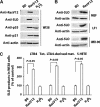
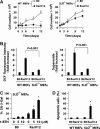

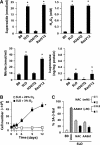

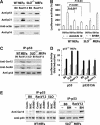
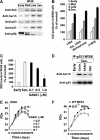

References
-
- Appella E, Anderson CW (2001) Post-translational modifications and activation of p53 by genotoxic stresses. Eur J Biochem 268: 2764–2772 - PubMed
-
- Atamna H, Paler-Martinez A, Ames BN (2000) N-t-butyl hydroxylamine, a hydrolysis product of alpha-phenyl-N-t-butyl nitrone, is more potent in delaying senescence in human lung fibroblasts. J Biol Chem 275: 6741–6748 - PubMed
-
- Bringold F, Serrano M (2000) Tumor suppressors and oncogenes in cellular senescence. Exp Gerontol 35: 317–329 - PubMed
Publication types
MeSH terms
Substances
LinkOut - more resources
Full Text Sources
Other Literature Sources
Research Materials
Miscellaneous

